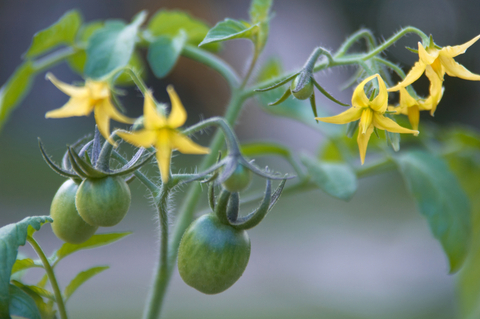
 Data Structure
Data Structure Networking
Networking RDBMS
RDBMS Operating System
Operating System Java
Java MS Excel
MS Excel iOS
iOS HTML
HTML CSS
CSS Android
Android Python
Python C Programming
C Programming C++
C++ C#
C# MongoDB
MongoDB MySQL
MySQL Javascript
Javascript PHP
PHP
- Selected Reading
- UPSC IAS Exams Notes
- Developer's Best Practices
- Questions and Answers
- Effective Resume Writing
- HR Interview Questions
- Computer Glossary
- Who is Who
Difference Between Foreground and Background Selection
Introduction
Plant breeding is the process of altering the genetic makeup of a plant species to create new, more desirable varieties.
It involves selecting certain individuals from a population and breeding them to produce offspring with specific traits.
One of the key techniques used in plant breeding is foreground and background selection.
Foreground and background selection are methods of identifying desirable traits in a population of plants. These methods are used to select plants that have specific traits and are more likely to produce offspring with those traits.
This article aims at noting the difference between foreground and background selection in plant breeding.
Foreground Selection
Foreground selection is a method of identifying desirable traits in a population of plants. It involves selecting individual plants based on specific traits that are desired.
For example, if a plant breeder is looking to create a variety of corn that is resistant to a certain pest, they may select individual plants that show resistance to that pest. These plants are then bred together to produce offspring that are more likely to have the desired trait.
Foreground selection is typically used for traits that are easy to identify and select for, such as disease resistance or plant height.
It is also commonly used in the early stages of plant breeding, when the breeder is looking to identify the most promising individuals to use in future breeding programs.
Background Selection
Background selection is a method of identifying plants that do not have undesirable traits. It involves selecting individual plants based on the absence of specific traits that are undesirable.

For example, if a plant breeder is looking to create a variety of tomatoes that are resistant to a certain disease, they may select individual plants that do not show any signs of the disease. These plants are then bred together to produce offspring that are more likely to be disease-resistant.
Background selection is typically used for traits that are more difficult to select for, such as resistance to complex diseases or tolerance to environmental stressors.
It is also commonly used in later stages of plant breeding when the breeder is looking to eliminate undesirable traits from the breeding population.
Differences Between Foreground and Background Selection
Trait Selection
The primary difference between foreground and background selection is the trait selection method used. Foreground selection involves selecting plants based on specific traits that are desired, while background selection involves selecting plants based on the absence of specific traits that are undesirable.
Timing
Foreground selection is typically used in the early stages of plant breeding when the breeder is looking to identify the most promising individuals to use in future breeding programs. Background selection is typically used in the later stages of plant breeding when the breeder is looking to eliminate undesirable traits from the breeding population.
Trait Complexity
Foreground selection is typically used for traits that are easy to identify and select for, such as disease resistance or plant height. Background selection is typically used for traits that are more difficult to select for, such as resistance to complex diseases or tolerance to environmental stressors.
Efficiency
Foreground selection is generally more efficient than background selection because it involves selecting individuals based on desirable traits, rather than eliminating individuals based on undesirable traits. However, background selection is still an important tool in plant breeding because it helps to ensure that undesirable traits are not passed on to future generations.
Conclusion
In conclusion, foreground and background selection are two important methods used in plant breeding to identify desirable traits and eliminate undesirable traits. Foreground selection involves selecting individuals based on specific traits that are desired, while background selection involves selecting individuals based on the absence of specific traits that are undesirable.
Both methods are important in plant breeding and are used at different stages of the breeding process.
Foreground selection is typically used in the early stages of breeding to identify promising individuals for future breeding programs, while background selection is typically used in later stages of breeding to eliminate undesirable traits from the breeding population.
Ultimately, the use of foreground and background selection in plant breeding helps plant breeders to create new, improved varieties of plants that are better suited to the needs of farmers, consumers, and the environment. By using these methods, plant breeders can create plants with increased disease resistance, higher yields, and better quality, among other desirable traits.
It is important to note that plant breeding is a complex and time-consuming process that requires a combination of scientific knowledge, skill, and patience. In addition, plant breeders must take into account the social, economic, and environmental factors that affect agriculture and food production.
In recent years, advances in biotechnology, including genetic engineering, have also had an impact on plant breeding. Genetic engineering allows plant breeders to introduce specific genes into plants to produce desired traits, such as disease resistance or drought tolerance.
While this technology has the potential to revolutionize plant breeding, it is also subject to public debate and regulatory oversight.
In conclusion, foreground and background selection are essential tools in plant breeding that allow breeders to identify and select desirable traits and eliminate undesirable traits. These methods, combined with other scientific and technological advances, are helping to create new, improved varieties of plants that are better suited to the needs of society and the environment.

